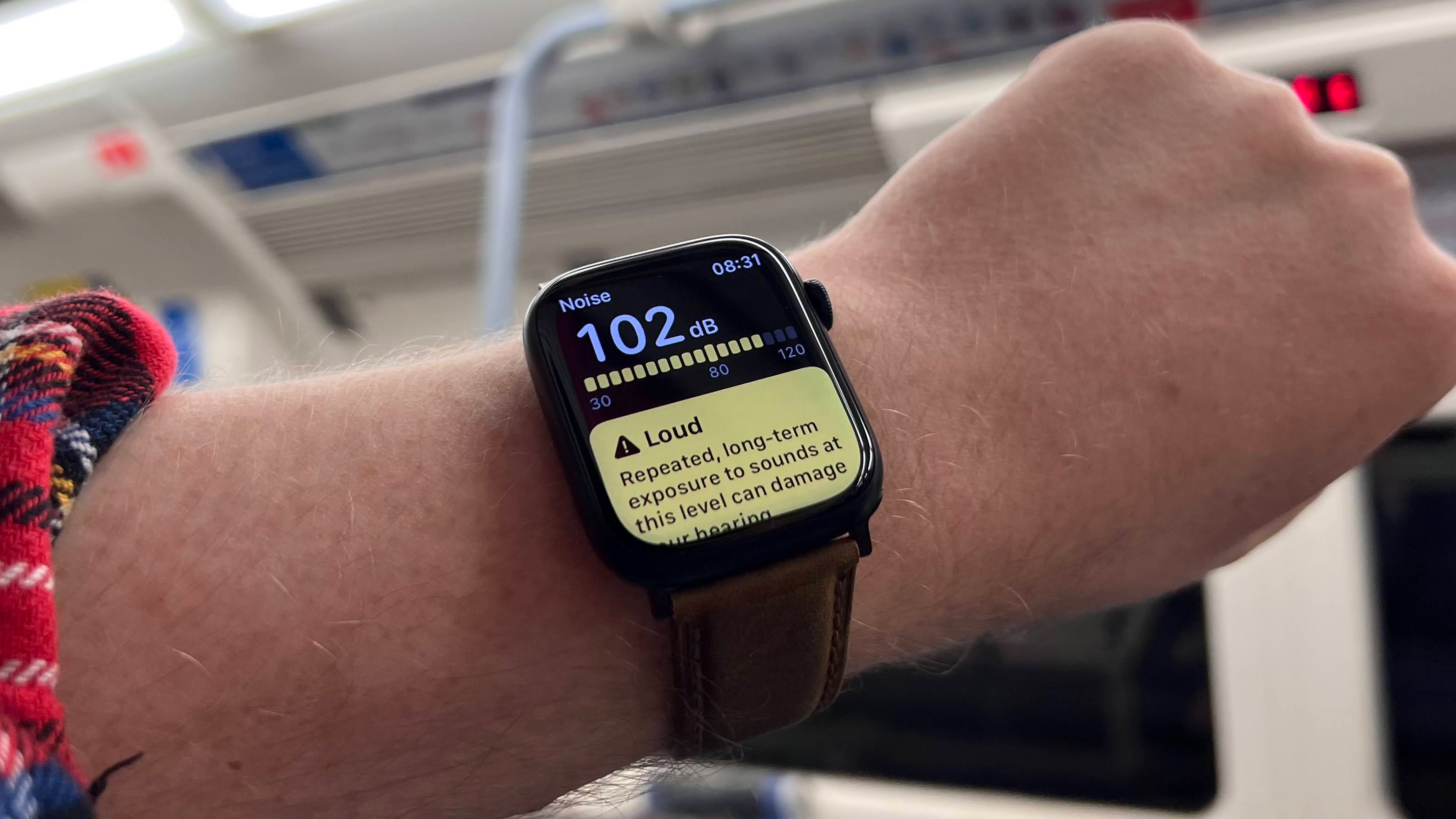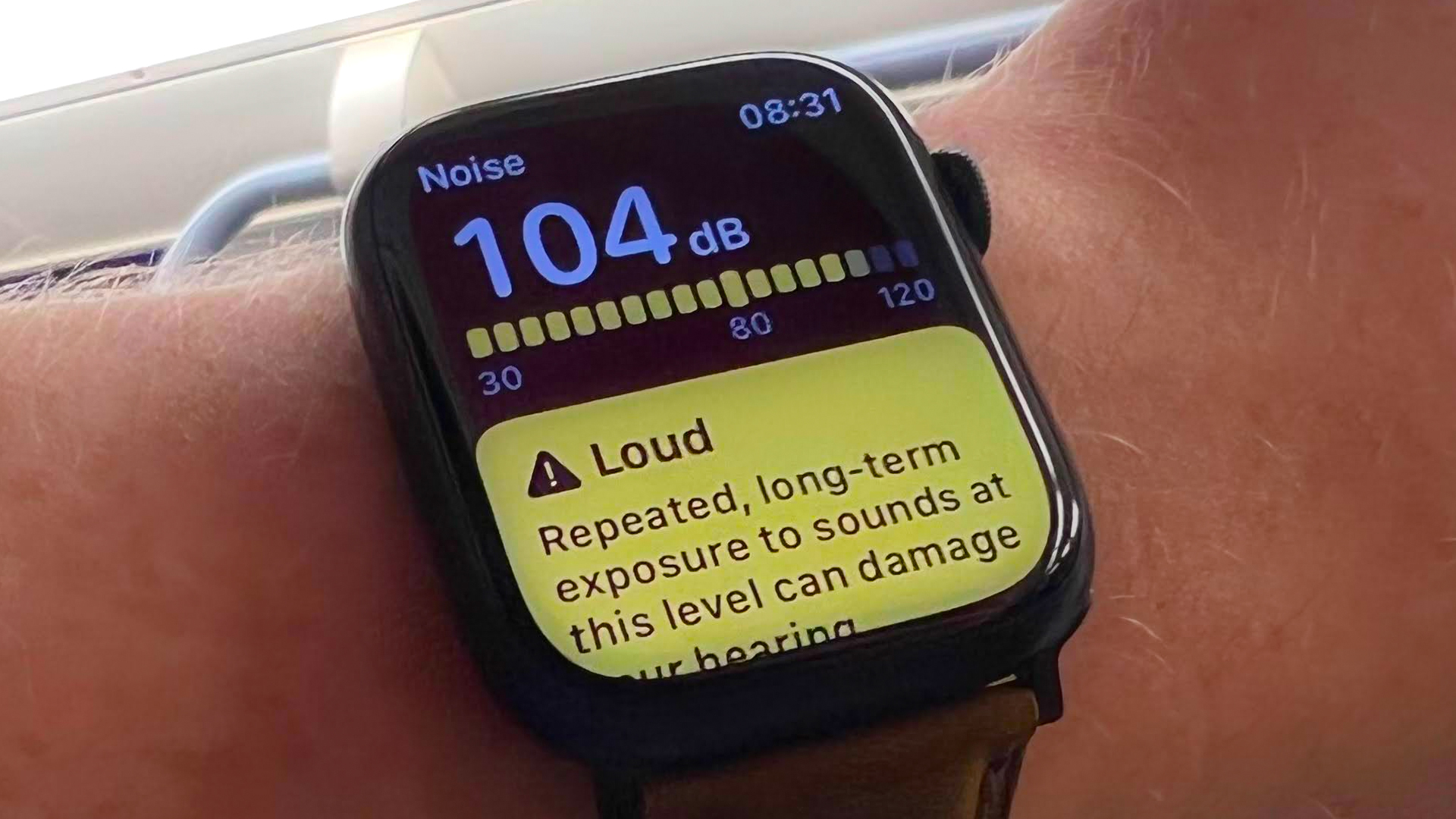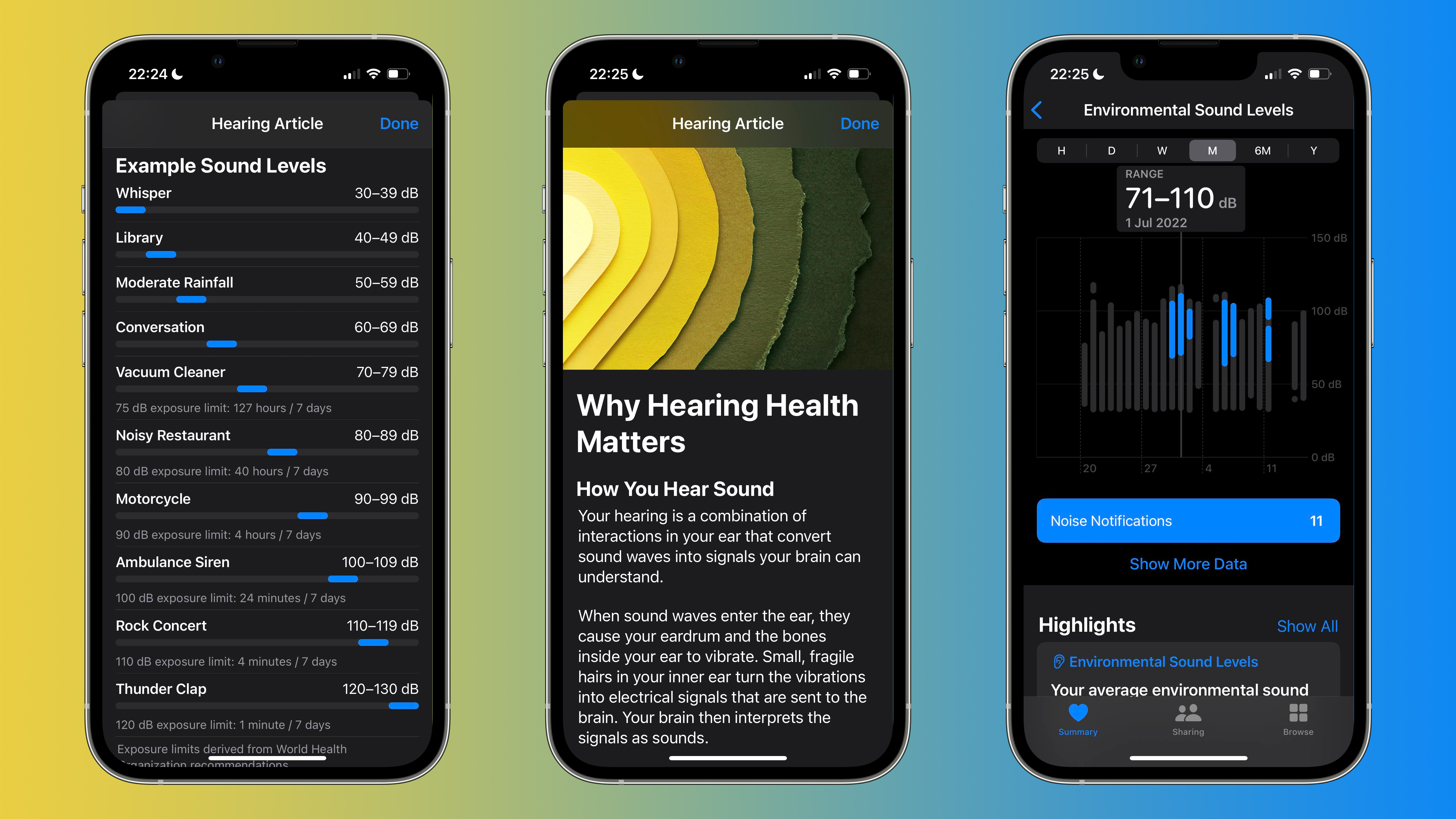How the Apple Watch is helping to save my hearing, one work commute at a time
It’s not just you — public transport is dangerously loud, but the Noise app can help.

Commuting has never been fun, but with the last few years spent mostly working from home, I had started to forget just how lousy it is: cramped conditions, awful smells, late services, and cranky passengers. Plus, you never forget the first (or last) time you end up with your face in a fellow commuter's armpit on the UK’s London Underground service.
What I hadn’t quite realized though, was how dangerous commuting can be for your hearing, too — at least not until I started wearing an Apple Watch Series 7, that is, which is single-handedly making me aware of just how precious my hearing health is.
Here’s how the Apple Watch, with a little help from the Noise app and Apple’s Health tracking app, is helping me protect my ears.
The screech of the Jubilee line
I’d always had my suspicions that the London Underground was a dangerously noisy way to travel. I’m no stranger to loud noises; I’ve spent years in front of guitar amps in bands, have been down the front at hundreds of gigs, and love to be close enough to a club’s speakers to feel the sound waves.
So I’d say my tolerance for noise has always been pretty high. But there was something about London’s Jubilee line, the most convenient route for my journey from South East London into iMore’s Central London office, that always worried me.
Riding the tube gets so loud, it’s dangerous, and the Apple Watch proved it.
It didn’t just rattle along, it absolutely screeched at some points on the route where the train’s metal wheels hit curves in the metal track. Fellow passengers would noticeably wince and put their fingers in their ears. I’d be envious of toddlers’ oversized ear defenders. It wasn’t just uncomfortable, it was distressing.
I’ve not long had one of the best Apple Watches, but it began to pay for itself once I found its built-in Noise monitoring app. Within seconds of firing it up, my suspicions were confirmed — riding the tube gets so loud, it’s dangerous, and the Apple Watch proved it.
Master your iPhone in minutes
iMore offers spot-on advice and guidance from our team of experts, with decades of Apple device experience to lean on. Learn more with iMore!
Using the Noise app

The Noise app is a piece of cake to use. Tap its icon, which looks like a yellow ear, and enable its monitoring permission. That’s it — the watch’s microphone will now scan the sound levels around you, informing you when they’re hitting dangerous ranges, and optionally send you a notification to take care if things get too extreme. That includes audio played back from your headphones too, such as Apple’s noise-canceling AirPods Pro or AirPods Max. No recordings are kept by the Noise app, so your privacy is maintained, but the data gathered is transferred to your iPhone’s Health app so you can keep track of long-term trends.
I'll be damned if a smelly train on my way to work is going to come between me and my hearing.
I was shocked to see the results. Firing up the app on my regular commute, the Apple Watch rarely dipped below 90 decibels (dB) — which Apple likens to sitting on a motorbike — with a peak of 110 dB recorded. For reference, this is the equivalent of being at a rock concert and something that you shouldn’t experience for more than four minutes over any seven-day period.
That’s the sort of level that can lead to permanent hearing damage if experienced regularly. And with Transport for London, the services’ operator, having previously acknowledged that there are no legal limitations on the volume of noise and vibration that can be produced from an existing railway, it’s not likely to be fixed soon.

Before we get ahead of ourselves… how accurate is the Apple Watch when it comes to monitoring? Well, very, according to this in-depth assessment from TheNoiseChap.com, with the Watch readings staying within 2 to 3 dB of a pro-grade, standalone noise meter device. The same assessment raises a good point — that the Apple Watch is only measuring "fast response," showing you the noise level at a given second rather than presenting its noise warnings as an average. And it’s prolonged exposure to high sound levels that are the most damaging.
Considering that the Apple Watch noted sounds above 100 dB on the tube quite frequently — and that it's a journey I was feasibly making twice a working day before even counting social trips — it became obvious of the risks I was exposing my ears to.
That’s the thing with hearing loss caused by exposure to loud sounds: it’s essentially irreversible. Once the damage has been done to the tiny fibers that line your ear and aid hearing, it’s done for good. Hearing aids may help in some cases, but the frequencies and whispers you could hear previously will never return without amplifying apparatus.
Never risking my ears again
The Noise app and its accompanying Health app data are now staples on my commute in the same way that my Pocket read later app and Kindle app are. It’s taught me the noisiest stages of the Jubilee line track (between Canary Wharf and North Greenwich are particularly bad, if you’re wondering), and I prepare in kind with ear defenders or my favorite noise-canceling headphones when those stretches are reached. I’ve not always been the smartest when it comes to protecting my hearing over the years, but I’ll be damned if a smelly train on my way to work is going to come between me and hearing my favorite songs in the years to come. Here's hoping the feature returns even better for the new Apple Watch Series 8.

Gerald Lynch is the Editor-in-Chief of iMore, keeping careful watch over the site's editorial output and commercial campaigns, ensuring iMore delivers the in-depth, accurate and timely Apple content its readership deservedly expects. You'll never see him without his iPad Pro, and he loves gaming sessions with his buddies via Apple Arcade on his iPhone 15 Pro, but don't expect him to play with you at home unless your Apple TV is hooked up to a 4K HDR screen and a 7.1 surround system.
Living in London in the UK, Gerald was previously Editor of Gizmodo UK, and Executive Editor of TechRadar, and has covered international trade shows including Apple's WWDC, MWC, CES and IFA. If it has an acronym and an app, he's probably been there, on the front lines reporting on the latest tech innovations. Gerald is also a contributing tech pundit for BBC Radio and has written for various other publications, including T3 magazine, GamesRadar, Space.com, Real Homes, MacFormat, music bible DIY, Tech Digest, TopTenReviews, Mirror.co.uk, Brandish, Kotaku, Shiny Shiny and Lifehacker. Gerald is also the author of 'Get Technology: Upgrade Your Future', published by Aurum Press, and also holds a Guinness world record on Tetris. For real.
